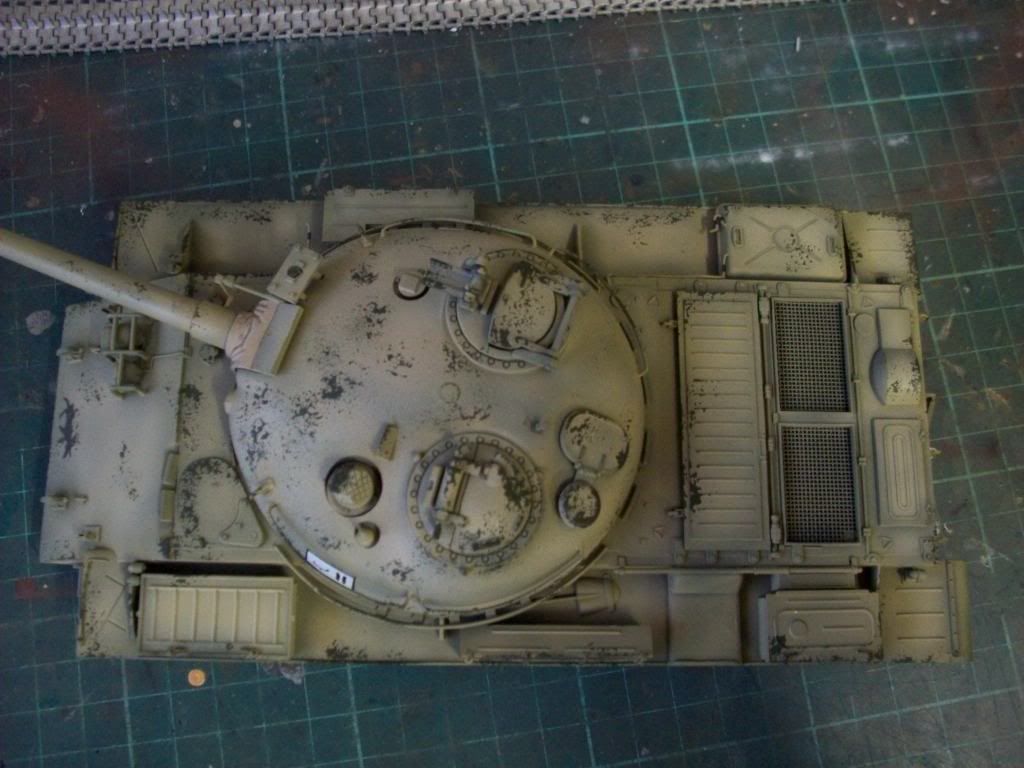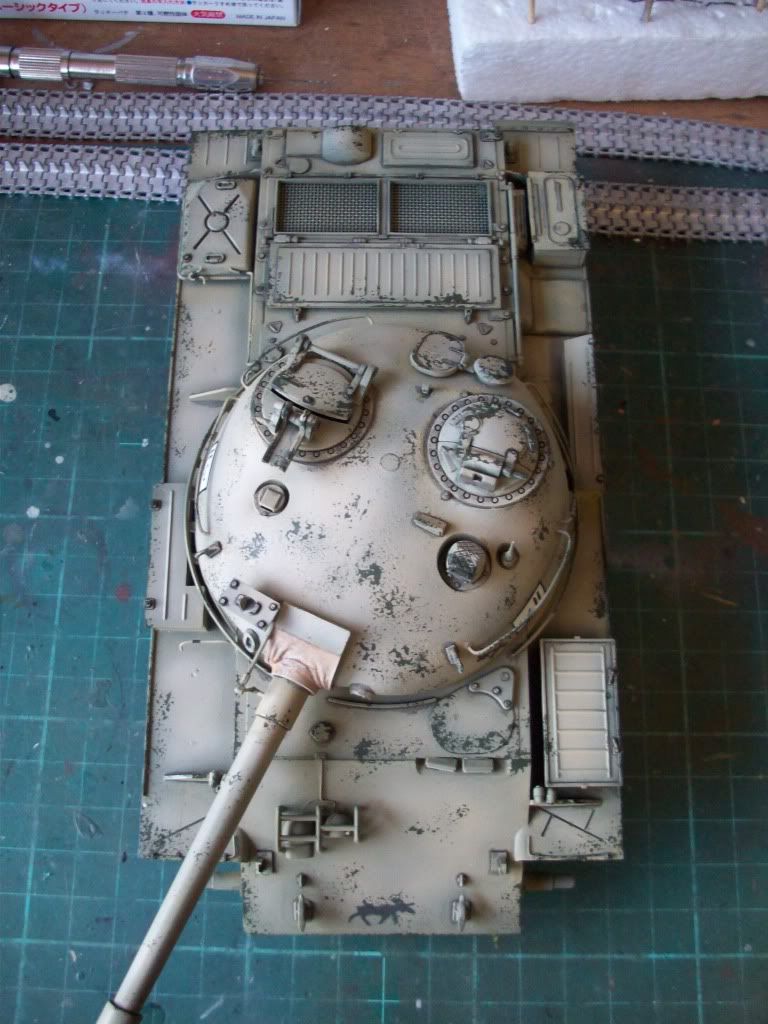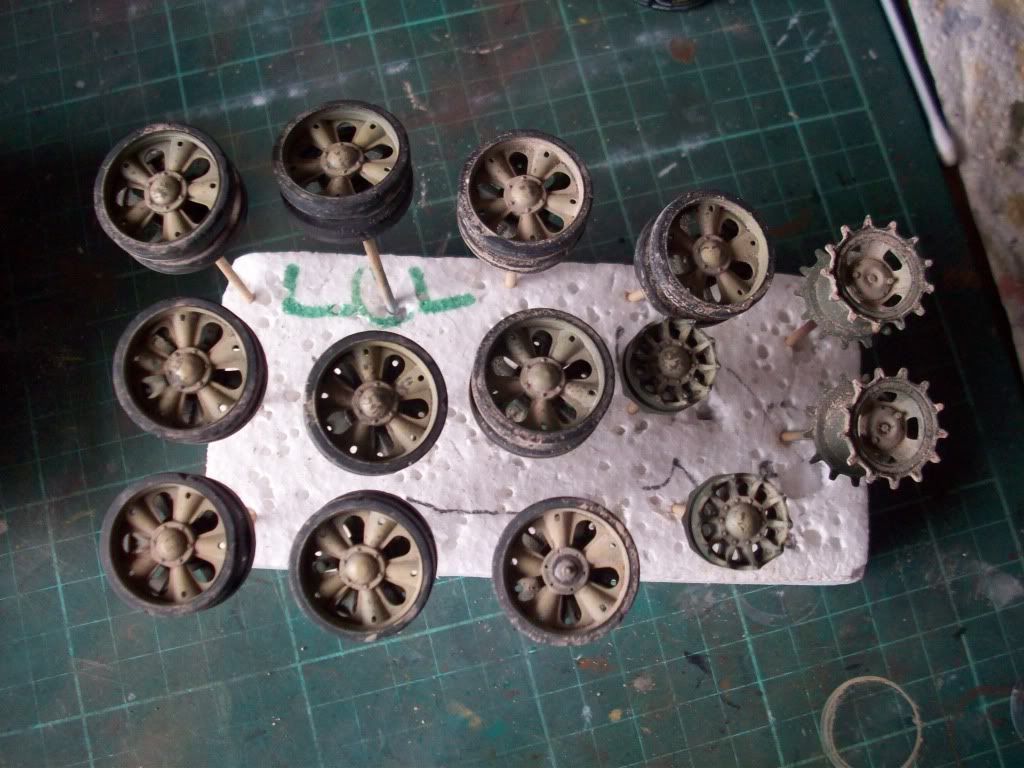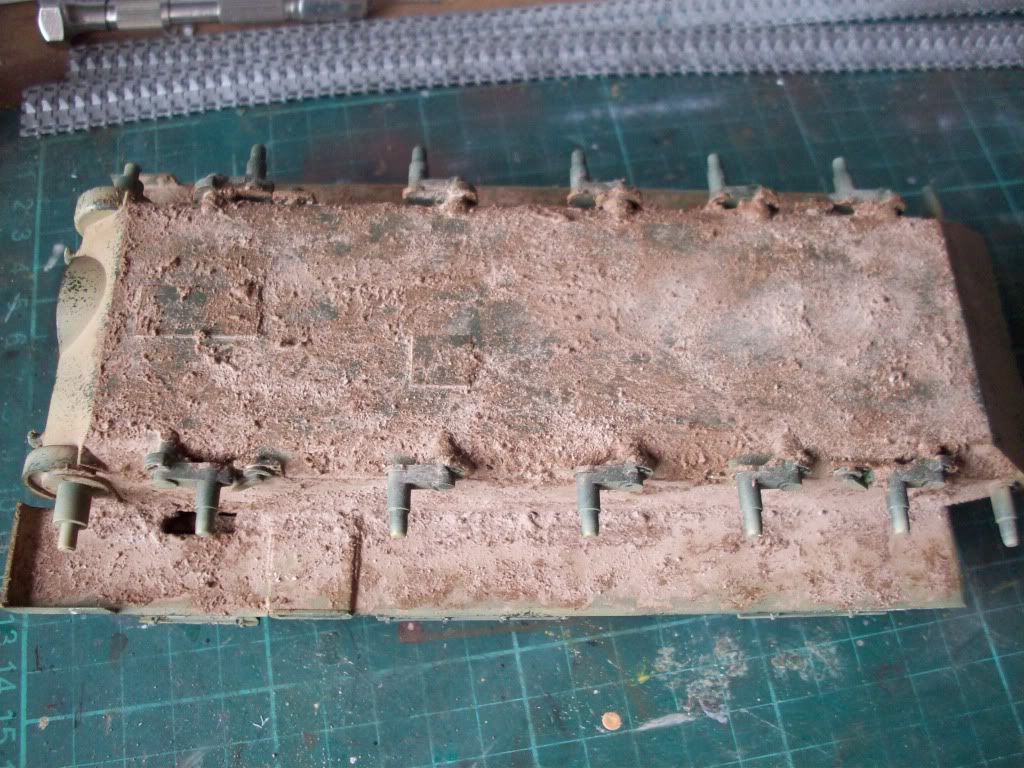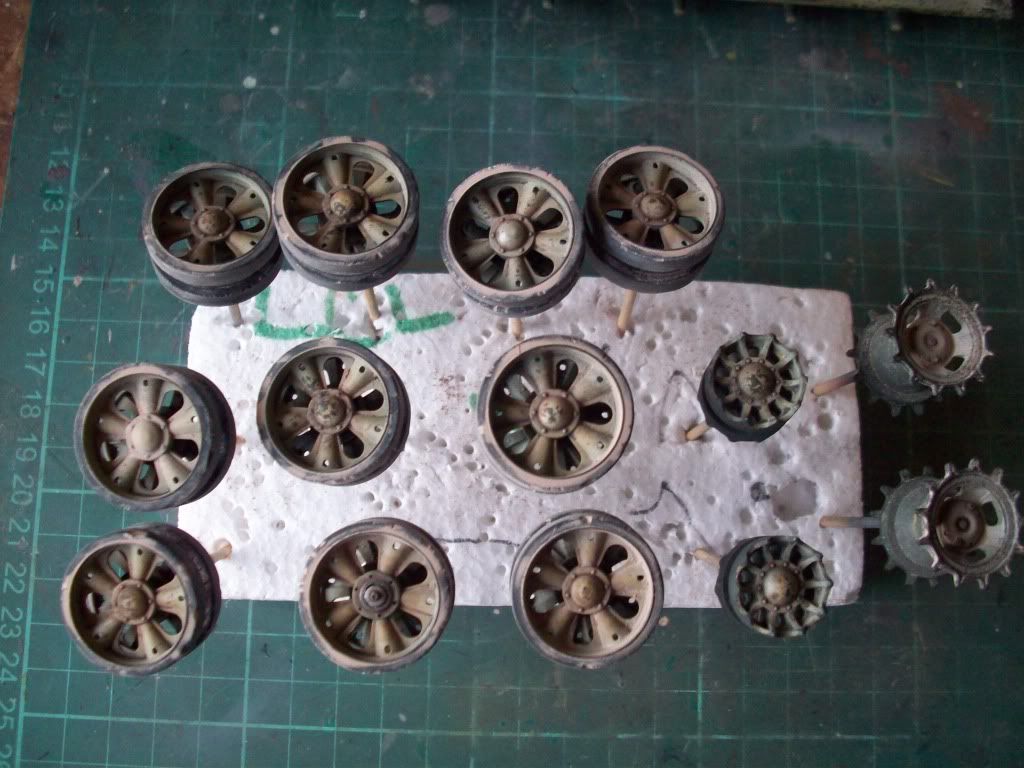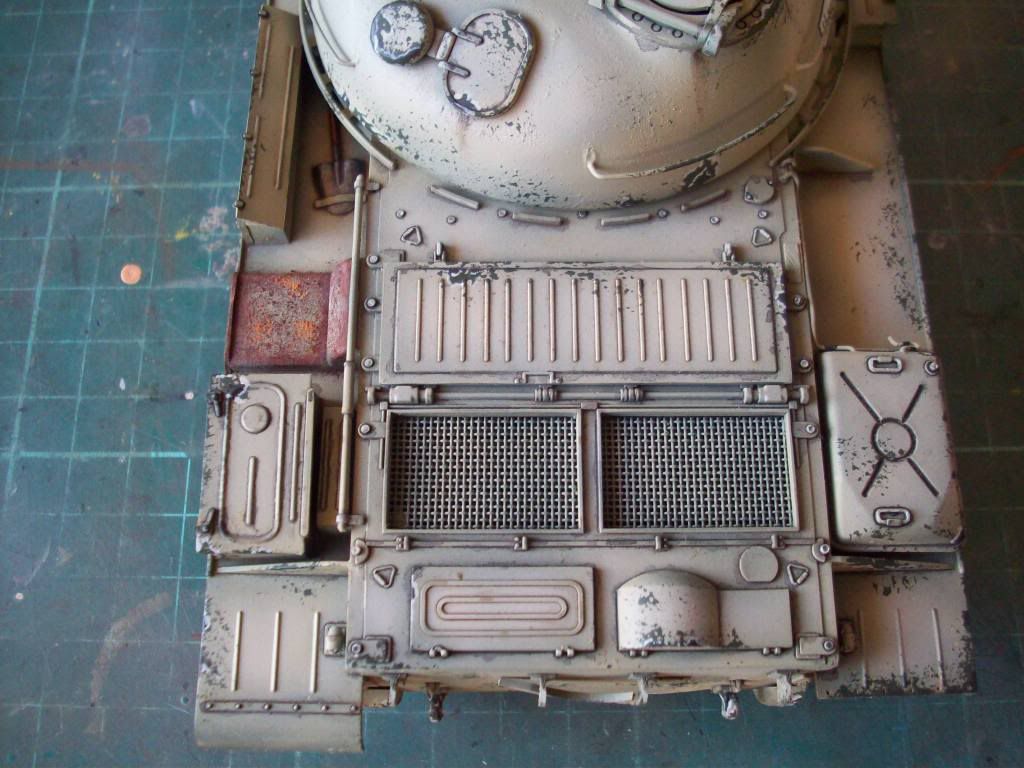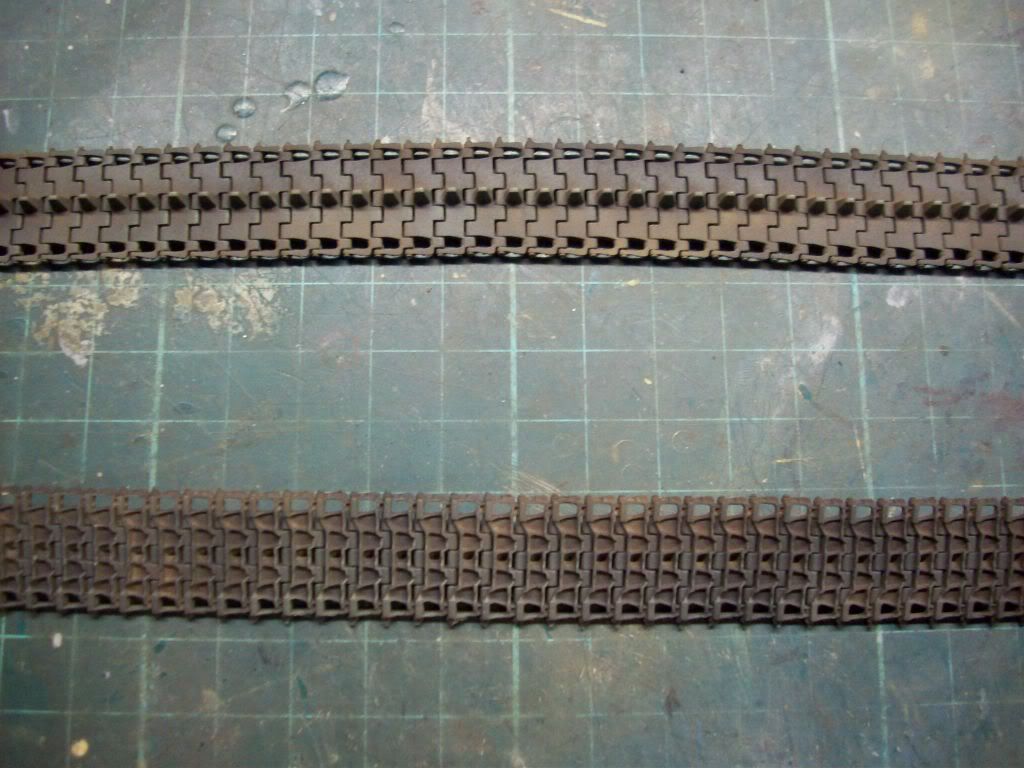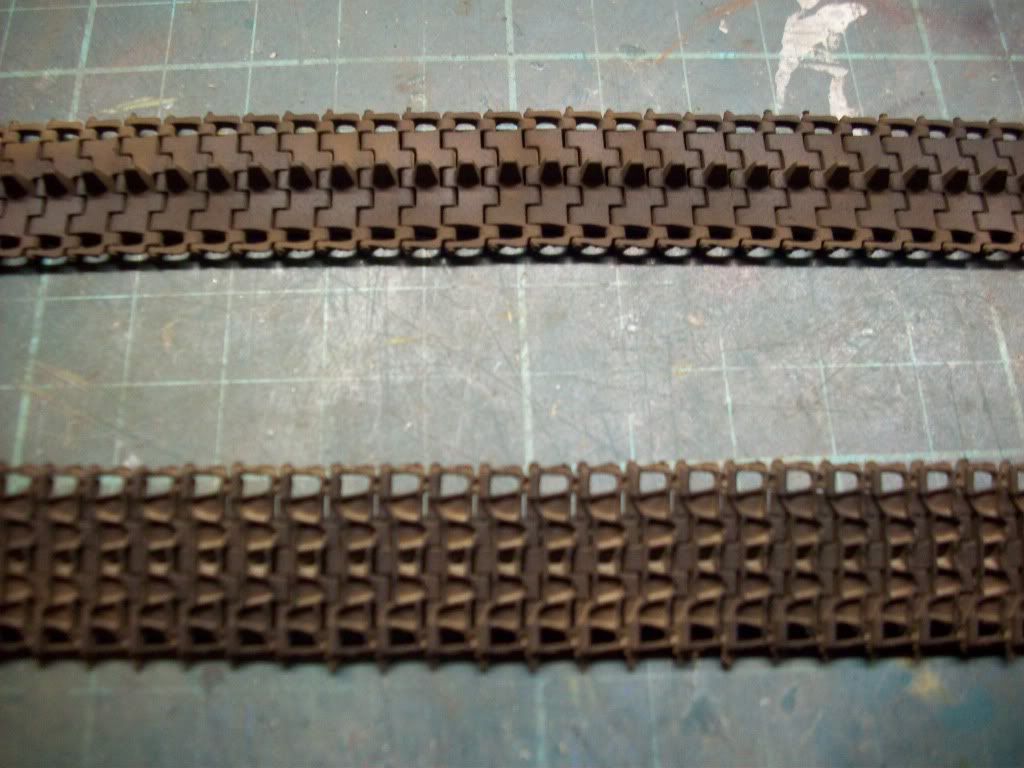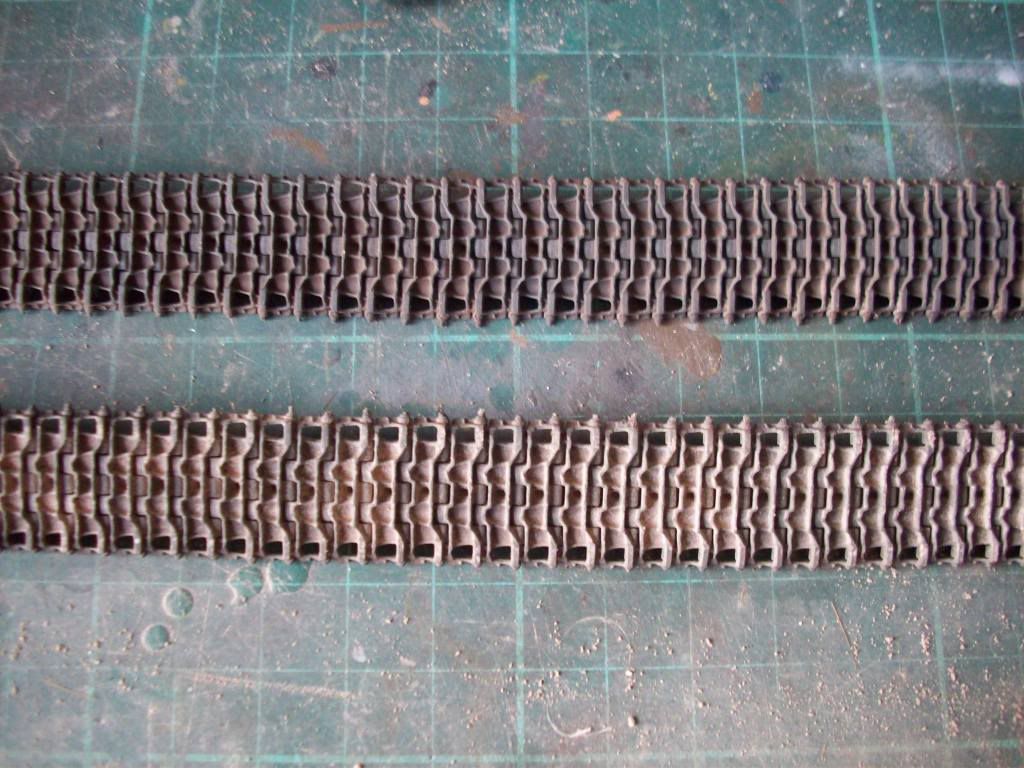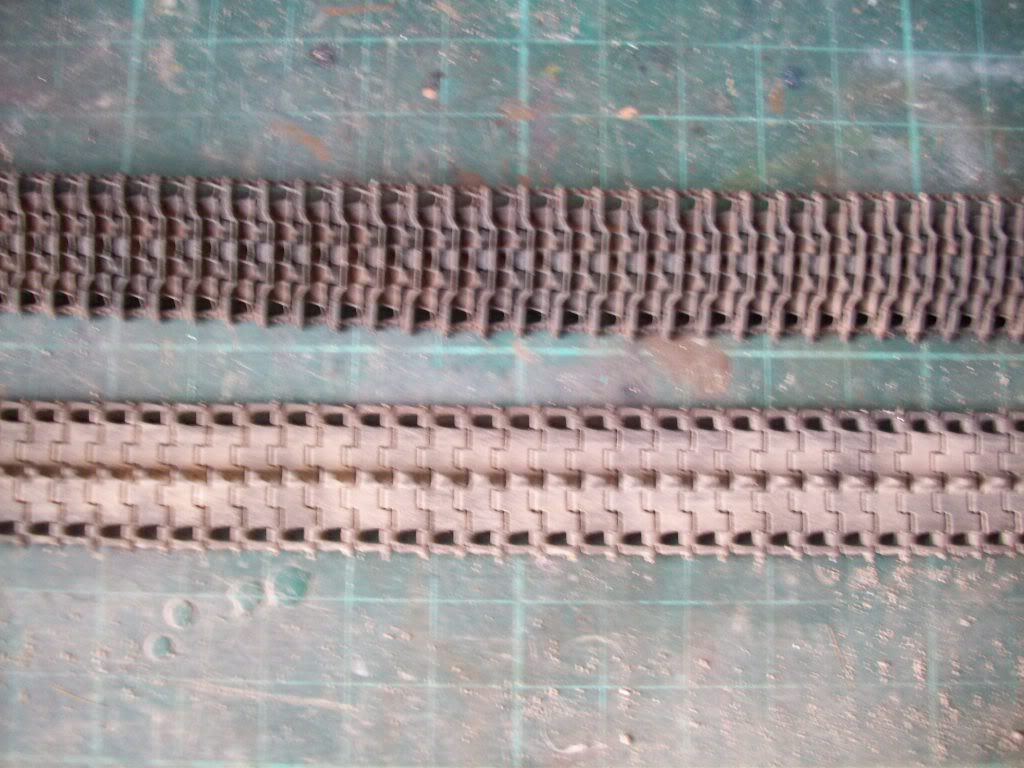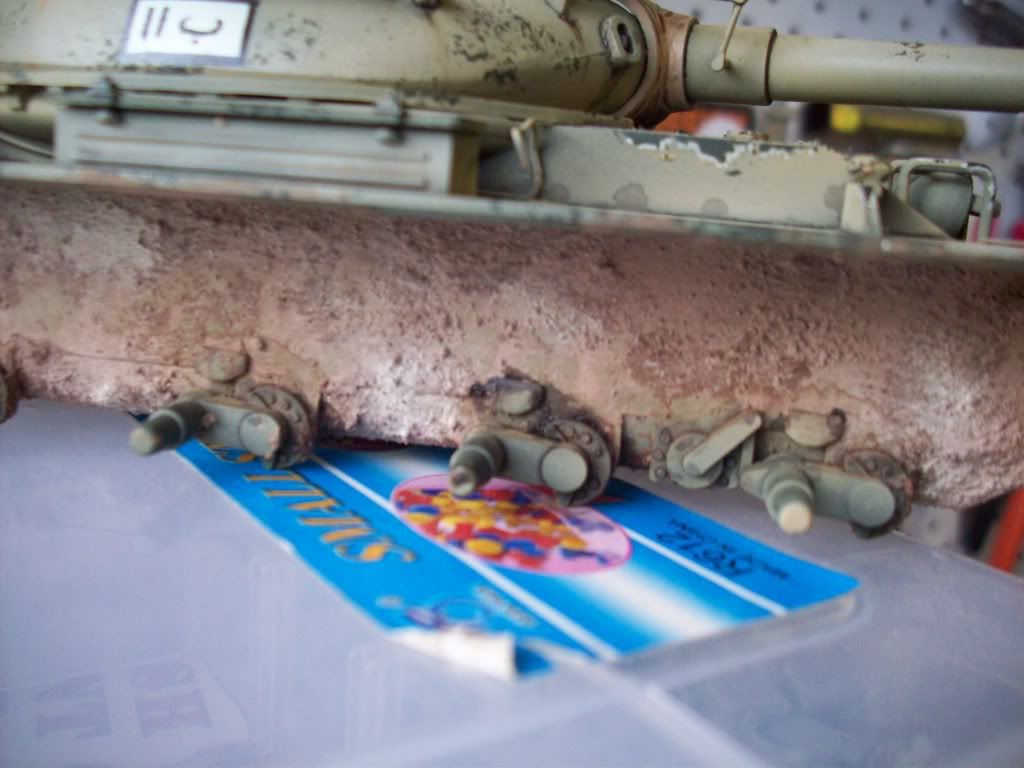Panzerfaust
Member
Background:
A member at my model club recently had this kit for sale (very cheaply $20) and I couldn’t resist for some reason so I purchased it. I started building it almost straight away.
The real vehicle:
A browse of the internet using google provided the reference photos below. This is an Iraqi army T62 main battle tank that has obviously been abandoned along a road (due to mechanical failure I’d guess).
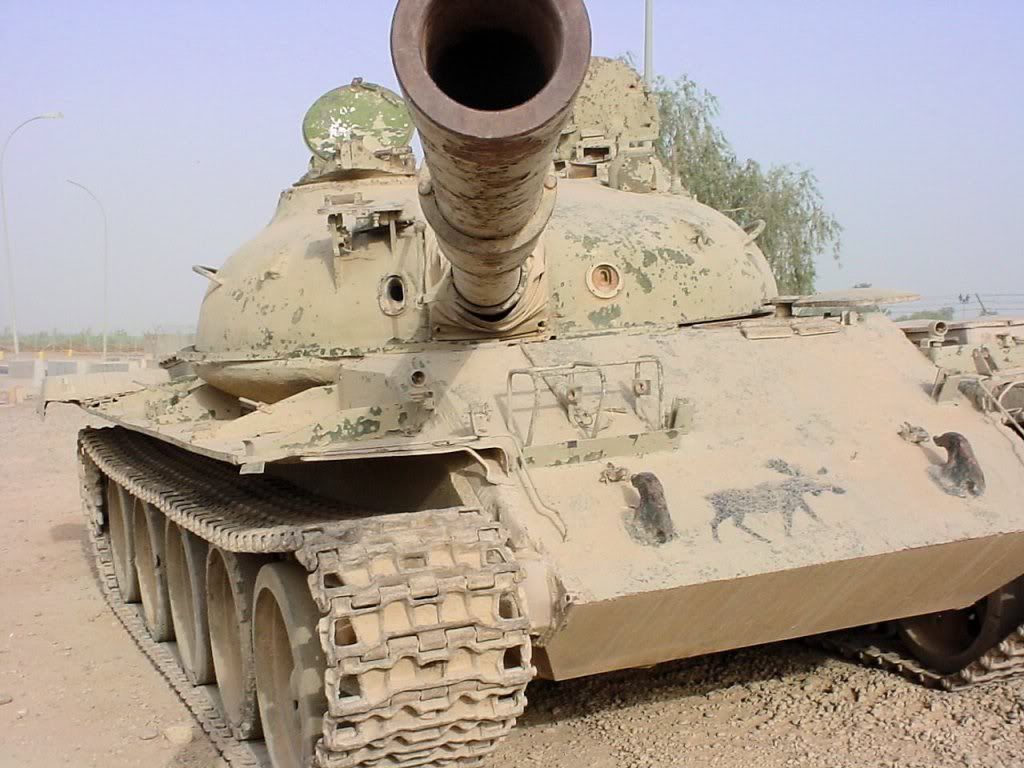
As you can see in the reference photos the tank is in a fairly run down condition with the Iraqi sand coloured paint very faded and chipping off all over the tank to reveal the original soviet armour green colour.
The Arabic characters painted on the turret read 11B (the tanks number I’m guessing). The reason & origin for the moose on the front glacis plate is unknown, I’m guessing put there by some American soldier.
You can also see that many of the fittings on the turret and hull are missing as well as the front two and one of the rear fenders. One of the wheels has a hub cap missing and the rubber road tyres are damaged to varying degrees.
These are all features I want to incorporate into my model and are the reason I was attracted to the photos. I will however be modelling the engine cover closed and the hatches on the turret etc. just open a little bit (to suggest an abandoned vehicle) as there is no interior at all included in the kit
Construction of the Tamiya Kit:
Upon examining the kit parts I had some mixed feelings, while most of the parts were excellently moulded with fine details the kit tracks were a simple vinyl “rubber band” affair that would ultimately spoil the look of the finished model.
A quick look on line and a phone call secured a set of the “Rolls Royce” of model tank tracks….. Fruilmodelisimo tracks….. Made in the Czech Republic.
These are a set of cast metal individual track links that are pinned together with wire… just like the real thing… It doesn’t get any better than this!
The basic hull and turret parts were assembled. Tamiya supply a section of wire grille for the engine air intake on the top of the engine deck at the rear which looks great.
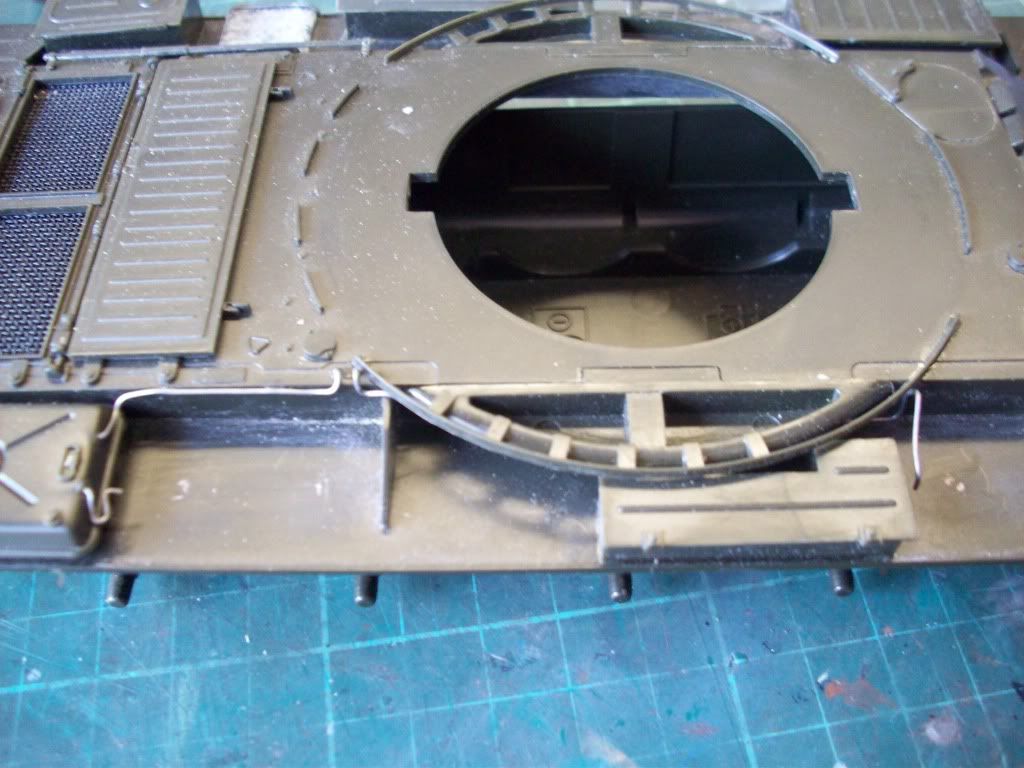
The kit detail parts were then examined and compared to the real tank in the reference photos to determine which parts need to go on the tank and which will be left off. I had some decisions to make at this point as it would require a fair amount of work to leave off most of the tool boxes so I decided to include them all but pose one open (to reinforce the abandoned look of the vehicle). The references show that all of the external fuel cells are also removed…. However I really liked the look of these so I used just one…
The exhaust outlet needed some holes drilled around the outer lip and the surface was textured using liquid putty called Mr Surfacer. This was applied with a short stiff brush in a stippling manner
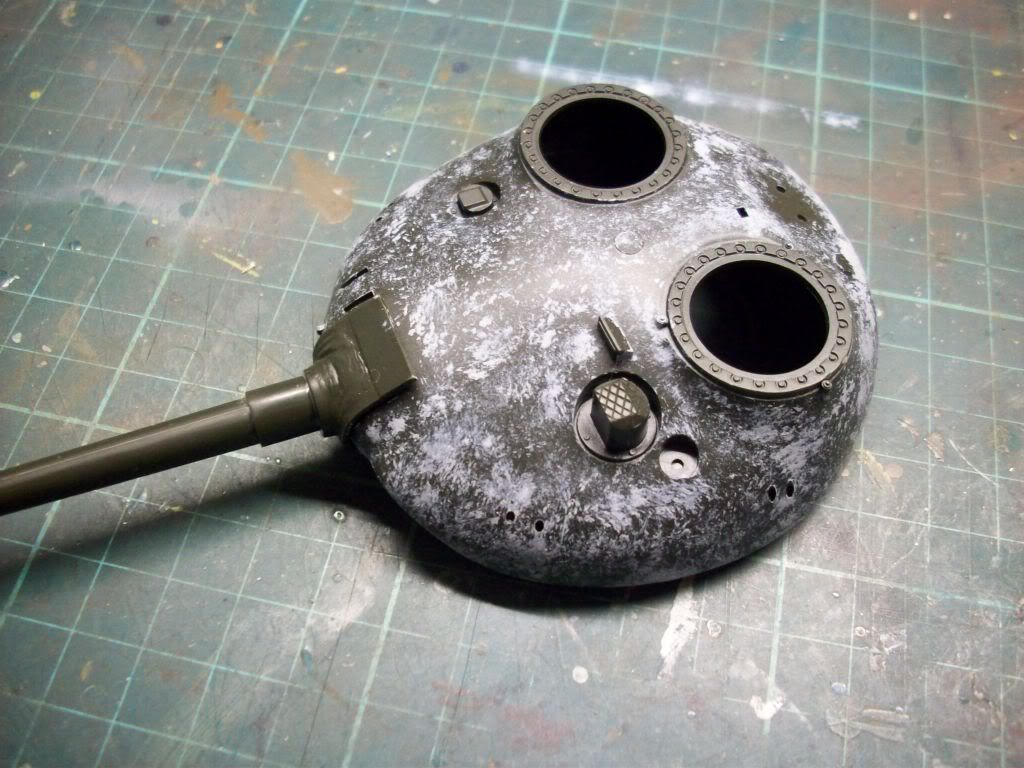
On the real tank the turret is a massive single piece of steel cast in a sand mould like an upside down frying pan. To duplicate the rough cast steel surface I again stippled on the Mr. Surfacer.
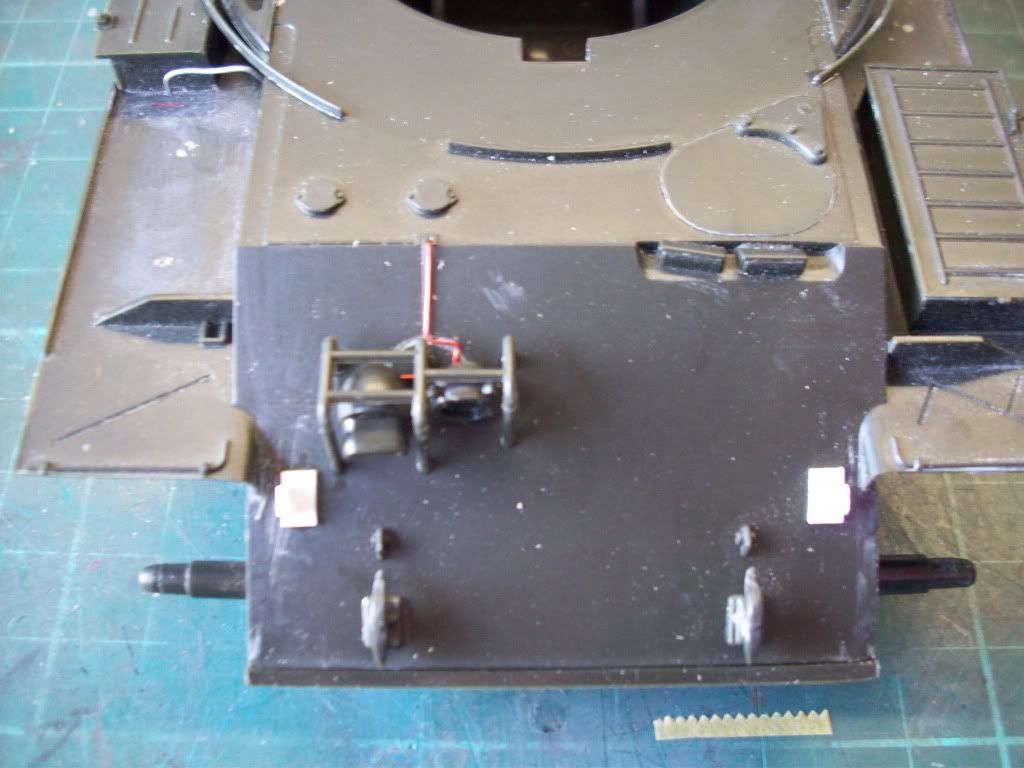
I added mounting brackets for a stowage board from plastic shapes and added the lights (although again they are not present on the photos). Cabling for the lights was added from fine copper wire.
Plumbing for the external fuel cells was added from fine solder wire (this stuff is easy to shape and bend).
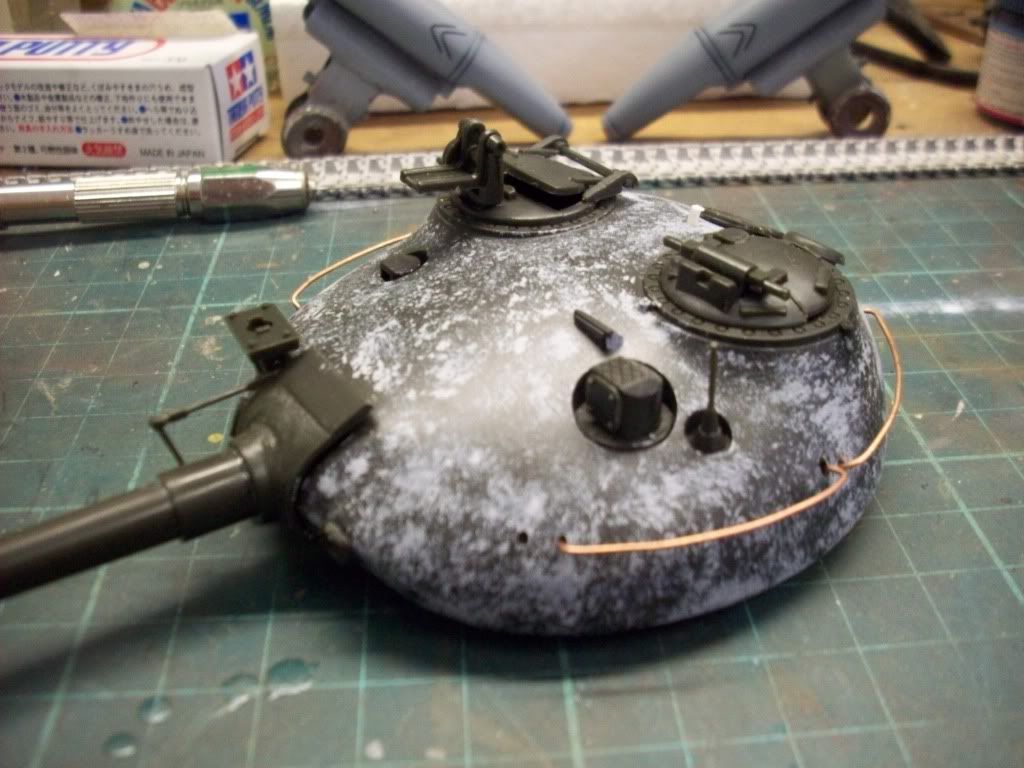
Grab handles are added to the turret from copper electrical wire that I stripped out of some house hold electrical cabling (the kit supplied plastic ones being far too fat).

The completed tank minus wheels and tracks.
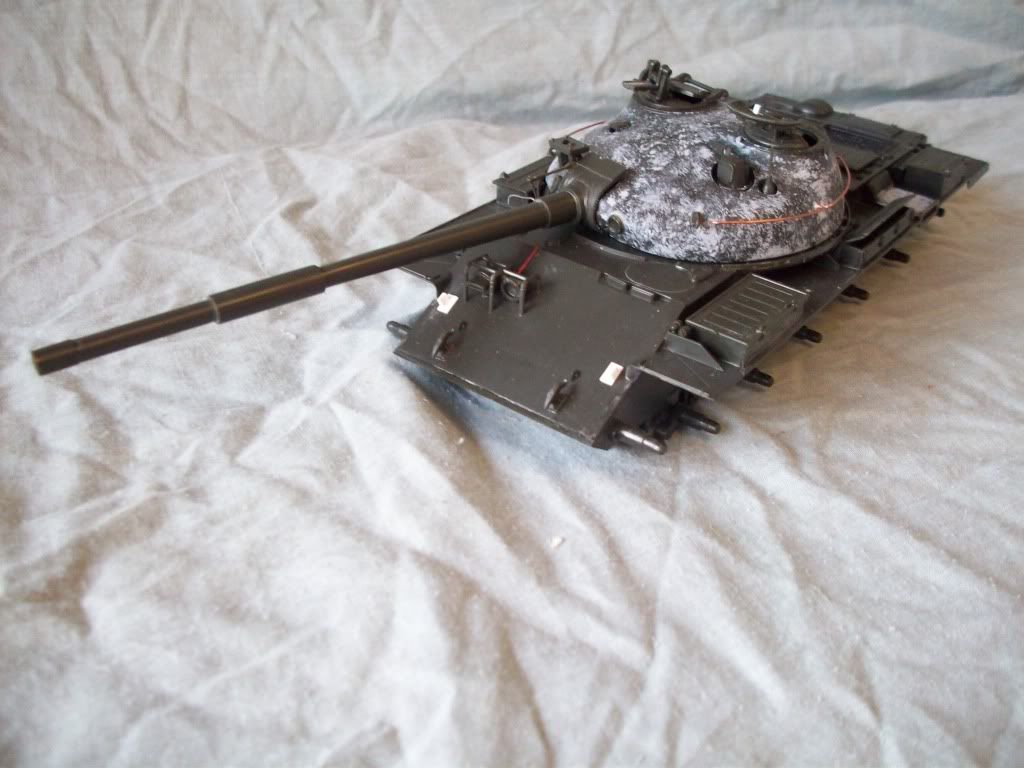
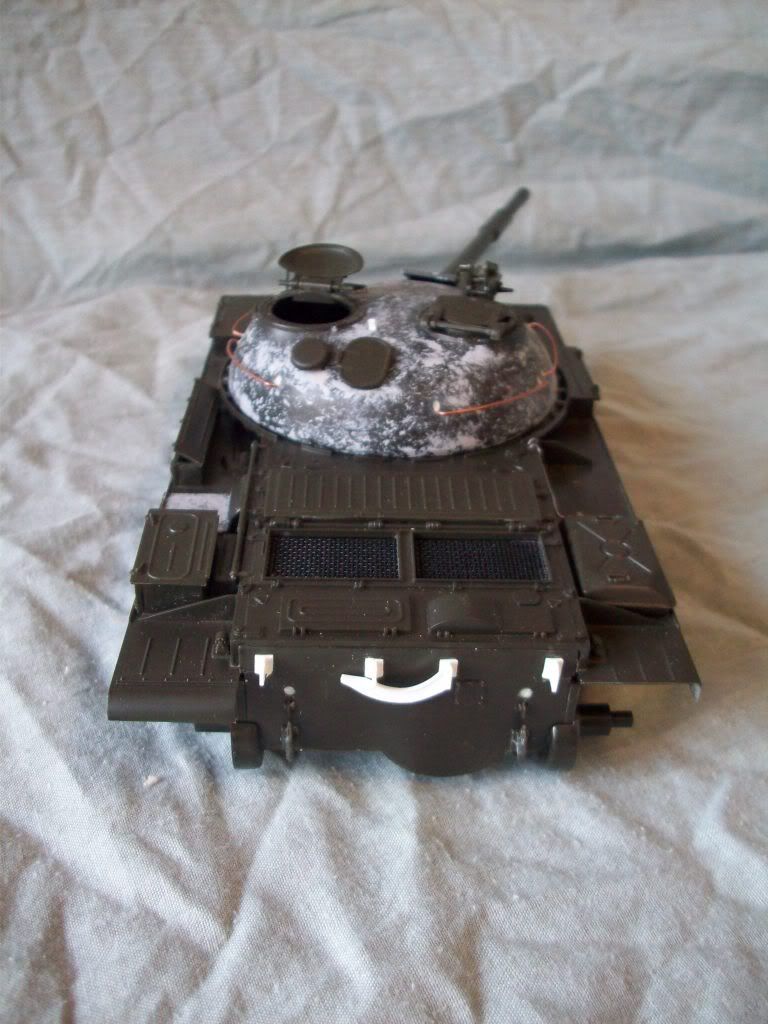
The rear hull plate showing a few modifications. The Soviet tanks had two huge 205 litre fuel drums attached to the rear plate. Upon examining the photos only the mounting brackets and one support are left on this tank. I made these details out of plastic shapes.
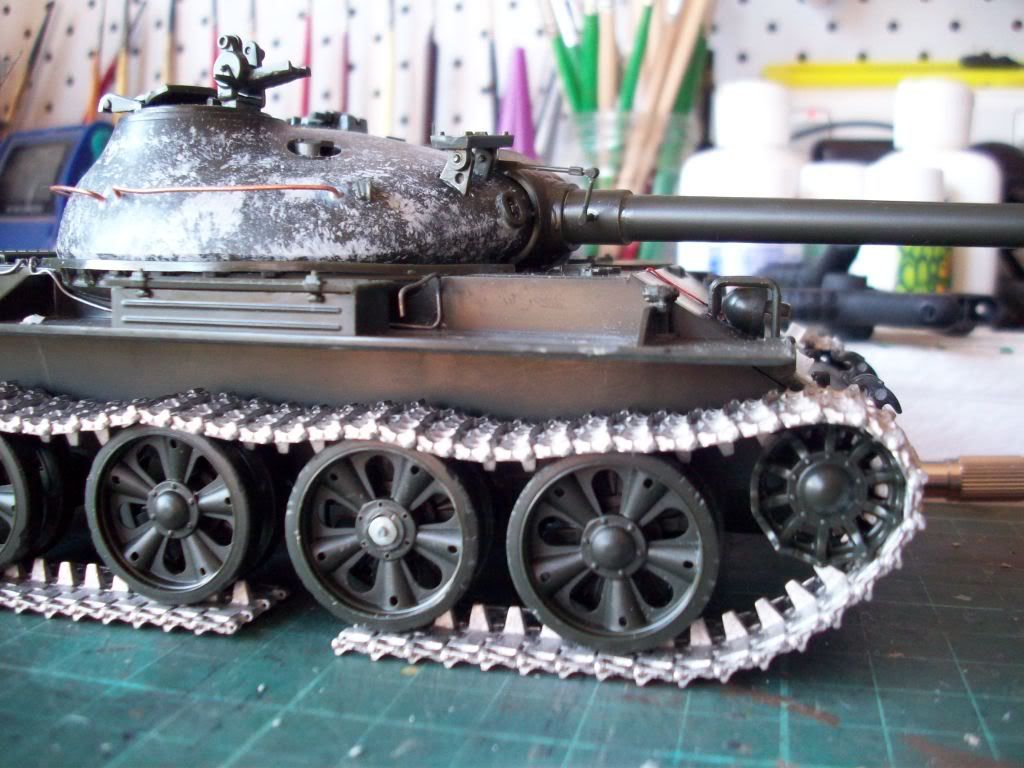
Test fit of the Fruil metal track links and wheels. The metal tracks are the closest thing to the ‘real item’ you can get. Notice how realistically they sag over the tops of the road wheels (compare to the real photos). It took maybe 6 hours to clean up and pin the 150 odd links per side together. Worth it though – they look cool!
To be continued....
Cheers,
Jase.
A member at my model club recently had this kit for sale (very cheaply $20) and I couldn’t resist for some reason so I purchased it. I started building it almost straight away.
The real vehicle:
A browse of the internet using google provided the reference photos below. This is an Iraqi army T62 main battle tank that has obviously been abandoned along a road (due to mechanical failure I’d guess).

As you can see in the reference photos the tank is in a fairly run down condition with the Iraqi sand coloured paint very faded and chipping off all over the tank to reveal the original soviet armour green colour.
The Arabic characters painted on the turret read 11B (the tanks number I’m guessing). The reason & origin for the moose on the front glacis plate is unknown, I’m guessing put there by some American soldier.
You can also see that many of the fittings on the turret and hull are missing as well as the front two and one of the rear fenders. One of the wheels has a hub cap missing and the rubber road tyres are damaged to varying degrees.
These are all features I want to incorporate into my model and are the reason I was attracted to the photos. I will however be modelling the engine cover closed and the hatches on the turret etc. just open a little bit (to suggest an abandoned vehicle) as there is no interior at all included in the kit
Construction of the Tamiya Kit:
Upon examining the kit parts I had some mixed feelings, while most of the parts were excellently moulded with fine details the kit tracks were a simple vinyl “rubber band” affair that would ultimately spoil the look of the finished model.
A quick look on line and a phone call secured a set of the “Rolls Royce” of model tank tracks….. Fruilmodelisimo tracks….. Made in the Czech Republic.
These are a set of cast metal individual track links that are pinned together with wire… just like the real thing… It doesn’t get any better than this!
The basic hull and turret parts were assembled. Tamiya supply a section of wire grille for the engine air intake on the top of the engine deck at the rear which looks great.

The kit detail parts were then examined and compared to the real tank in the reference photos to determine which parts need to go on the tank and which will be left off. I had some decisions to make at this point as it would require a fair amount of work to leave off most of the tool boxes so I decided to include them all but pose one open (to reinforce the abandoned look of the vehicle). The references show that all of the external fuel cells are also removed…. However I really liked the look of these so I used just one…
The exhaust outlet needed some holes drilled around the outer lip and the surface was textured using liquid putty called Mr Surfacer. This was applied with a short stiff brush in a stippling manner

On the real tank the turret is a massive single piece of steel cast in a sand mould like an upside down frying pan. To duplicate the rough cast steel surface I again stippled on the Mr. Surfacer.

I added mounting brackets for a stowage board from plastic shapes and added the lights (although again they are not present on the photos). Cabling for the lights was added from fine copper wire.
Plumbing for the external fuel cells was added from fine solder wire (this stuff is easy to shape and bend).

Grab handles are added to the turret from copper electrical wire that I stripped out of some house hold electrical cabling (the kit supplied plastic ones being far too fat).

The completed tank minus wheels and tracks.


The rear hull plate showing a few modifications. The Soviet tanks had two huge 205 litre fuel drums attached to the rear plate. Upon examining the photos only the mounting brackets and one support are left on this tank. I made these details out of plastic shapes.

Test fit of the Fruil metal track links and wheels. The metal tracks are the closest thing to the ‘real item’ you can get. Notice how realistically they sag over the tops of the road wheels (compare to the real photos). It took maybe 6 hours to clean up and pin the 150 odd links per side together. Worth it though – they look cool!
To be continued....
Cheers,
Jase.

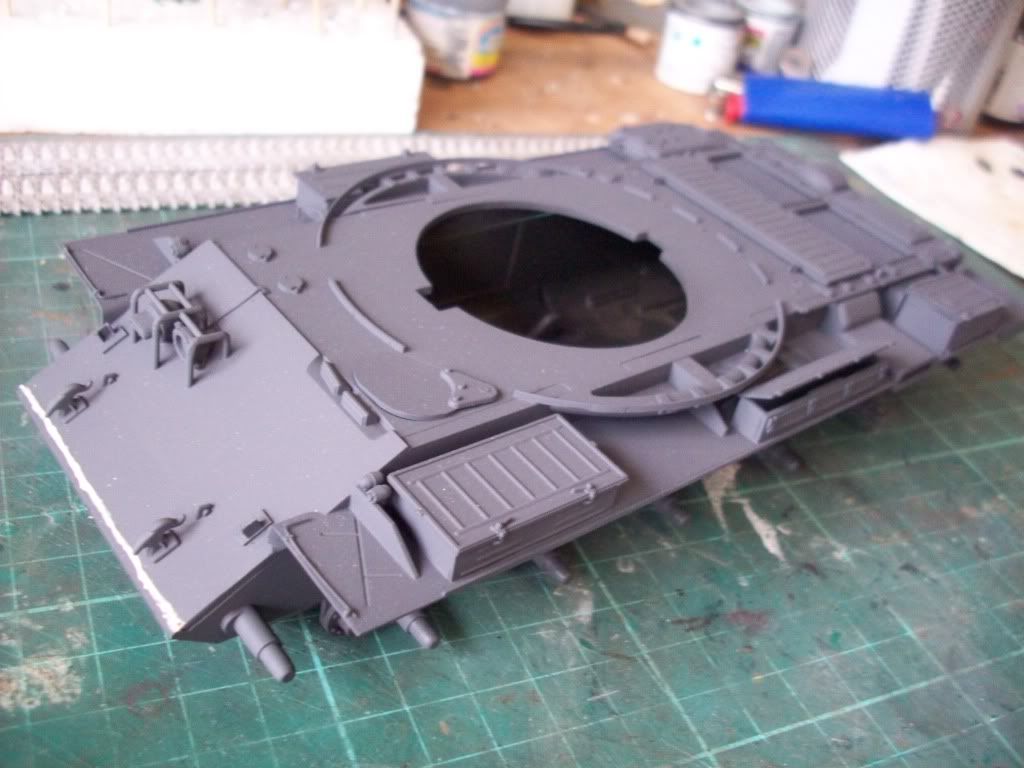


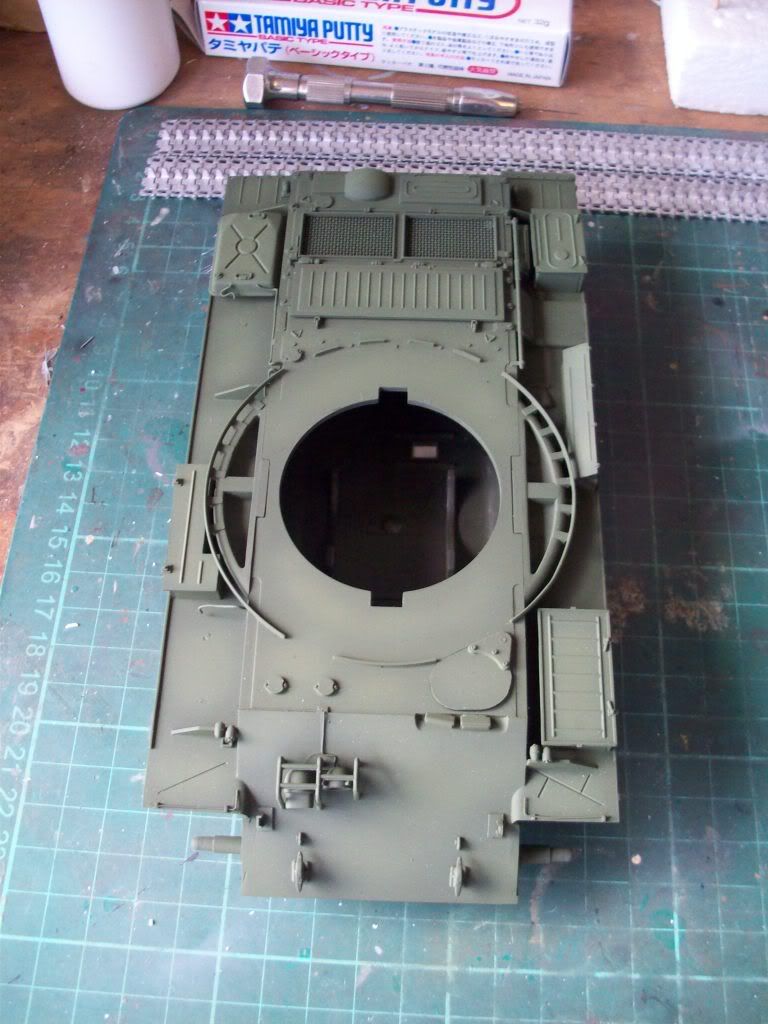
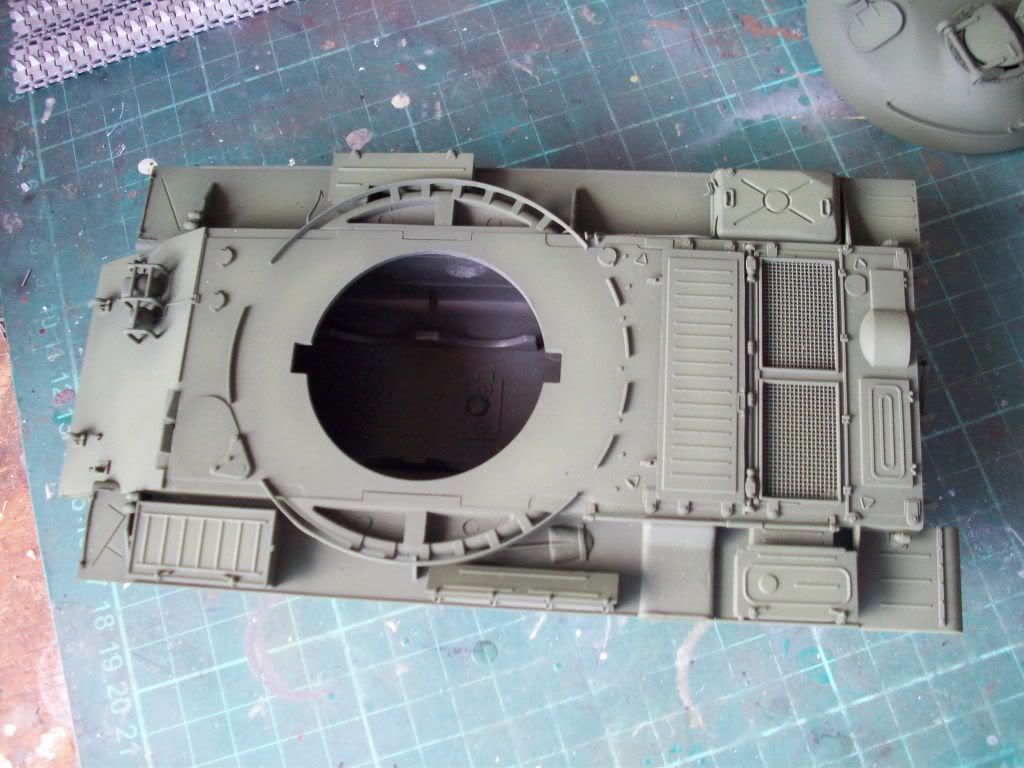



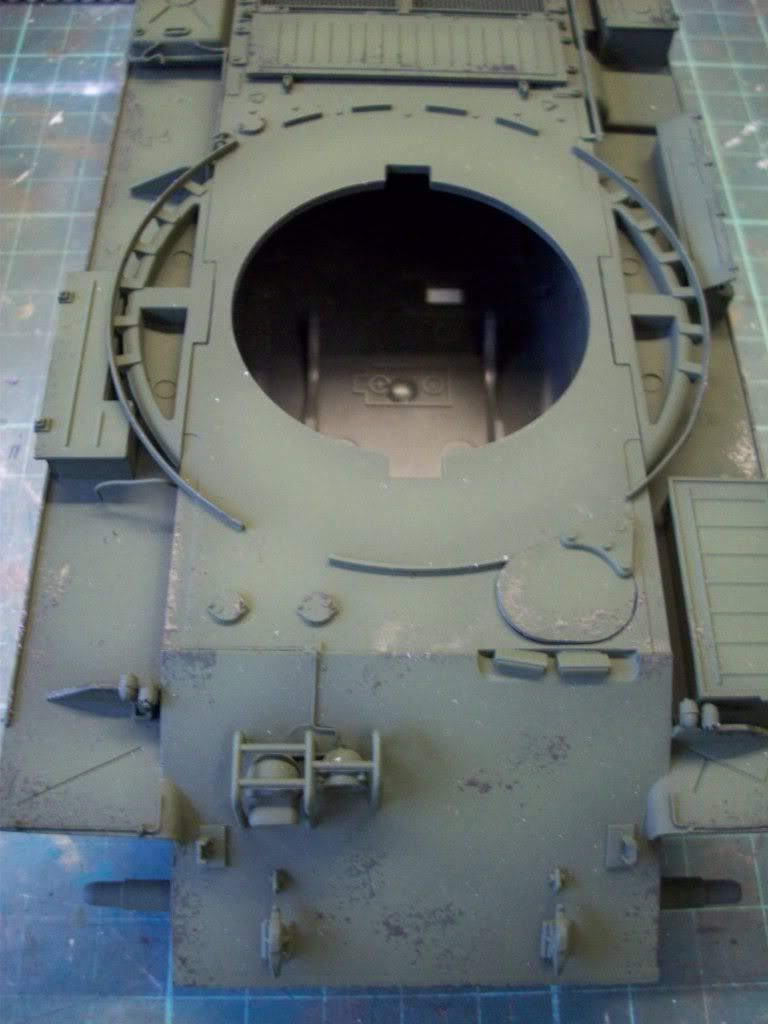
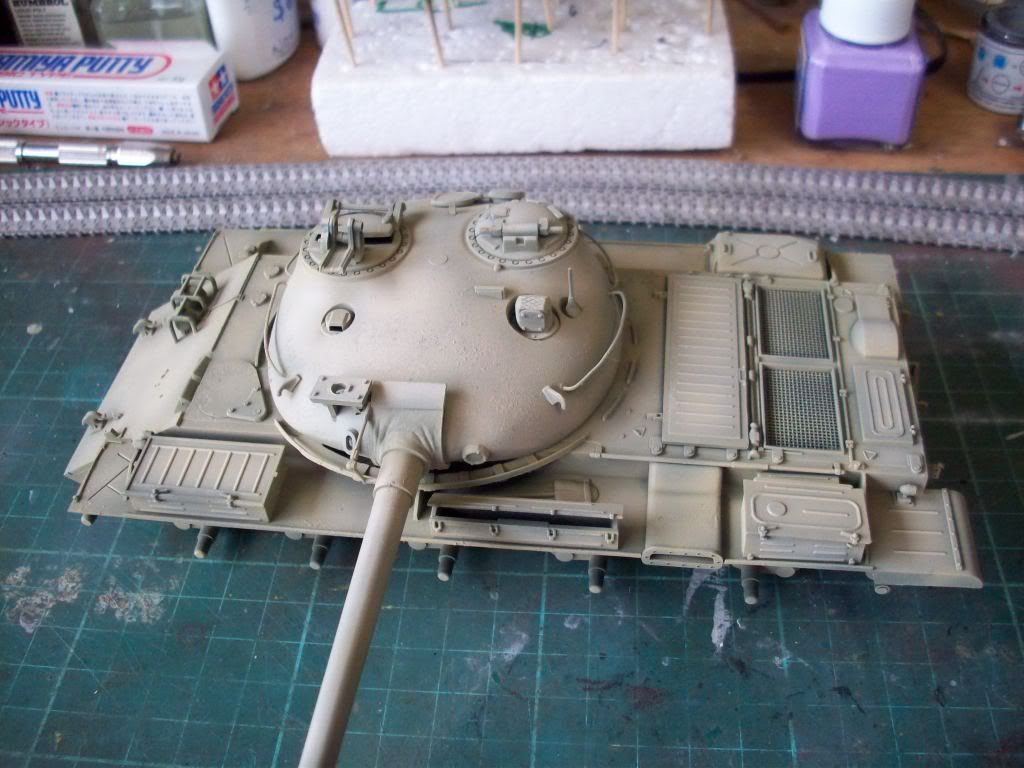
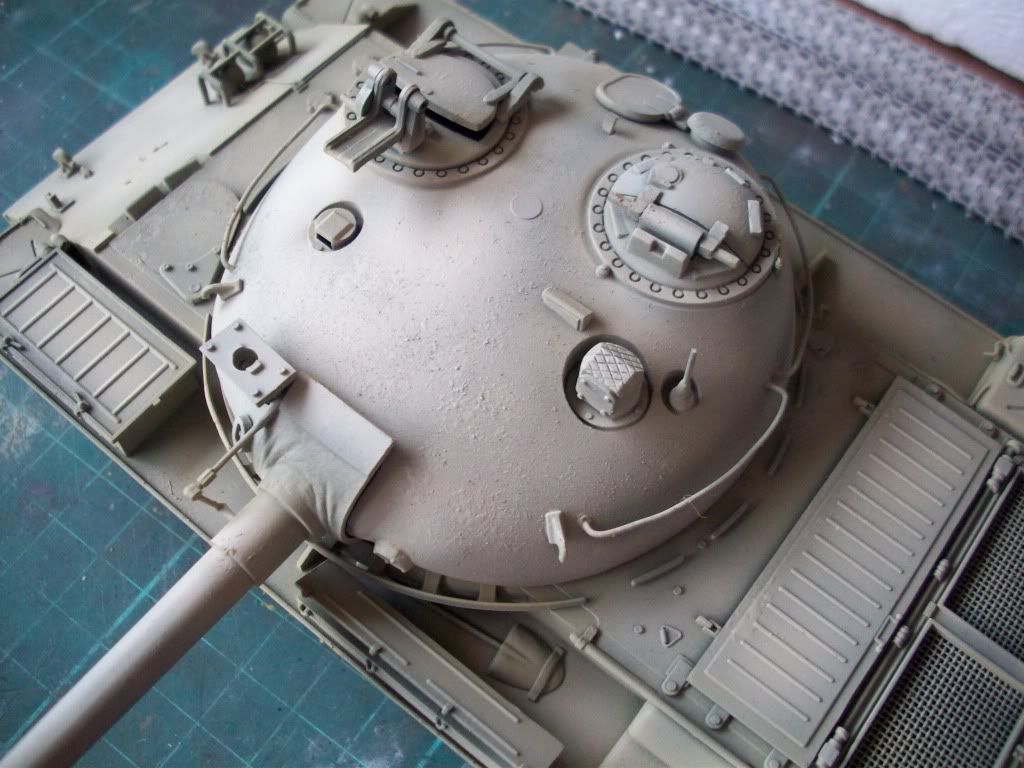
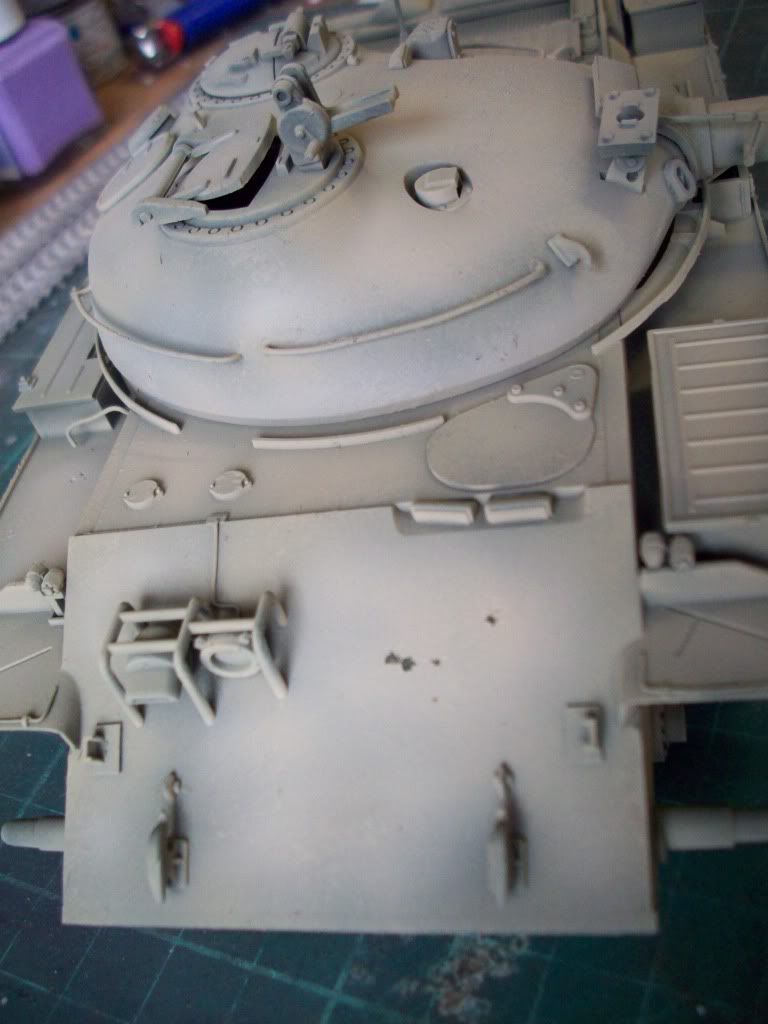



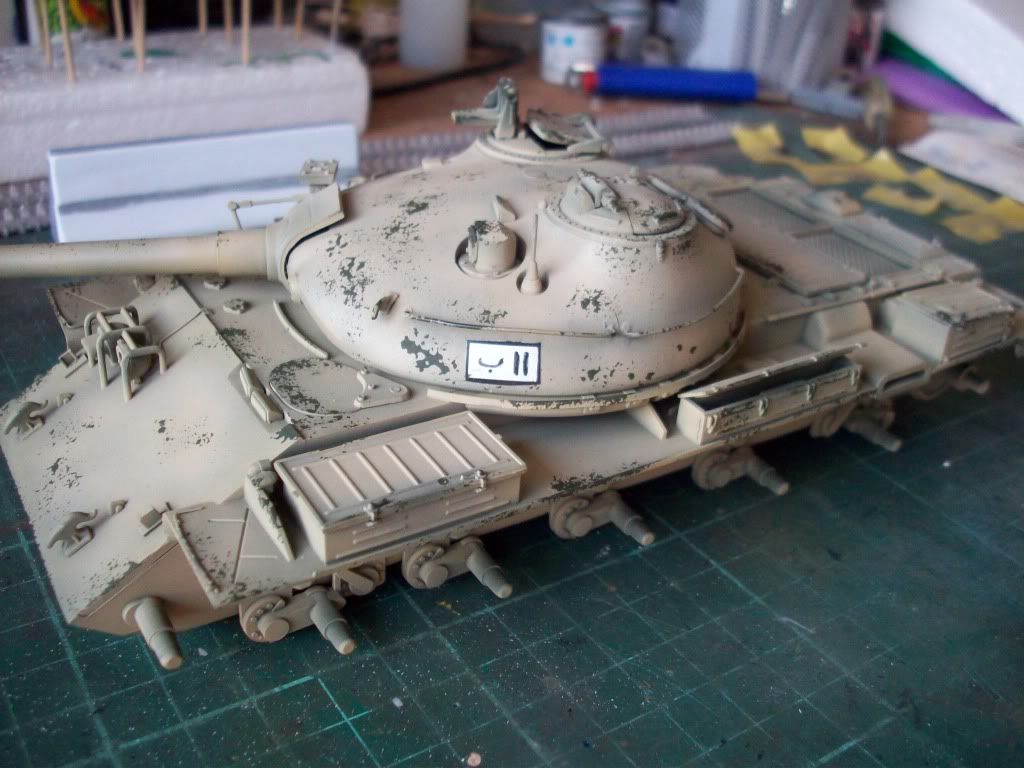

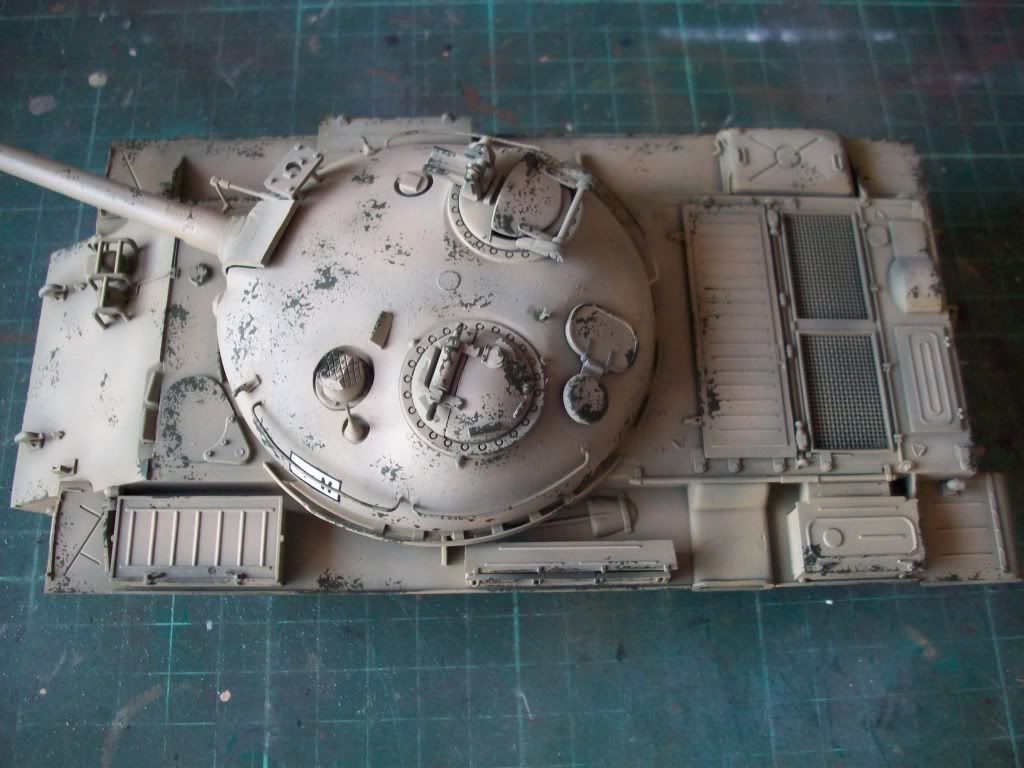

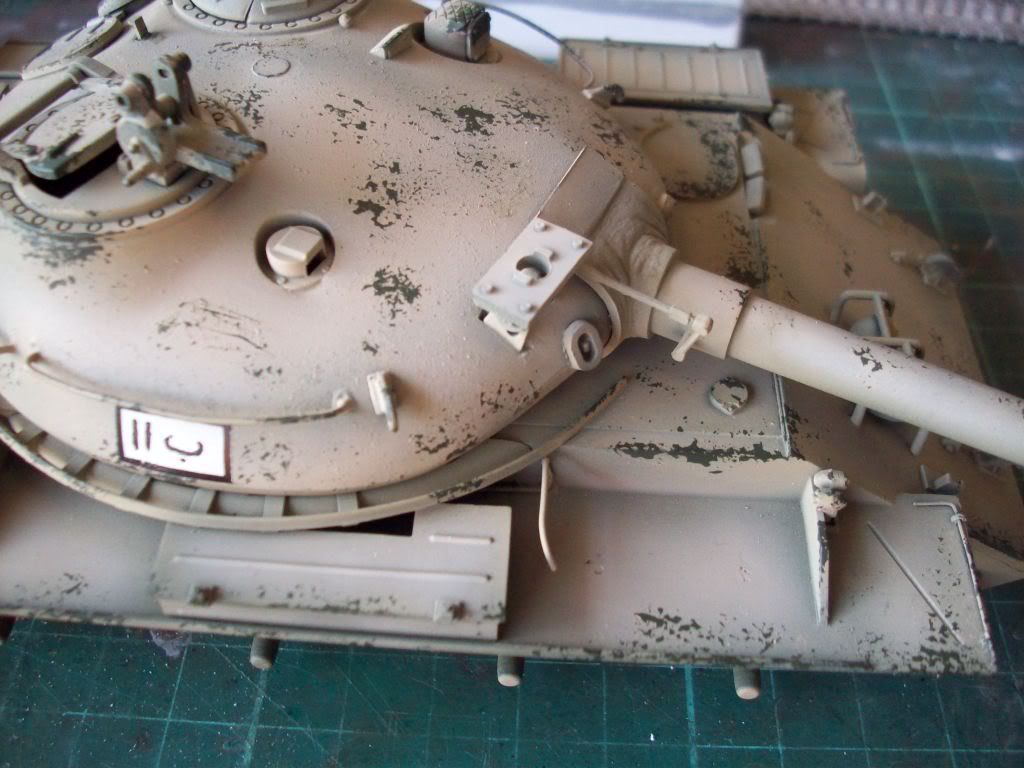
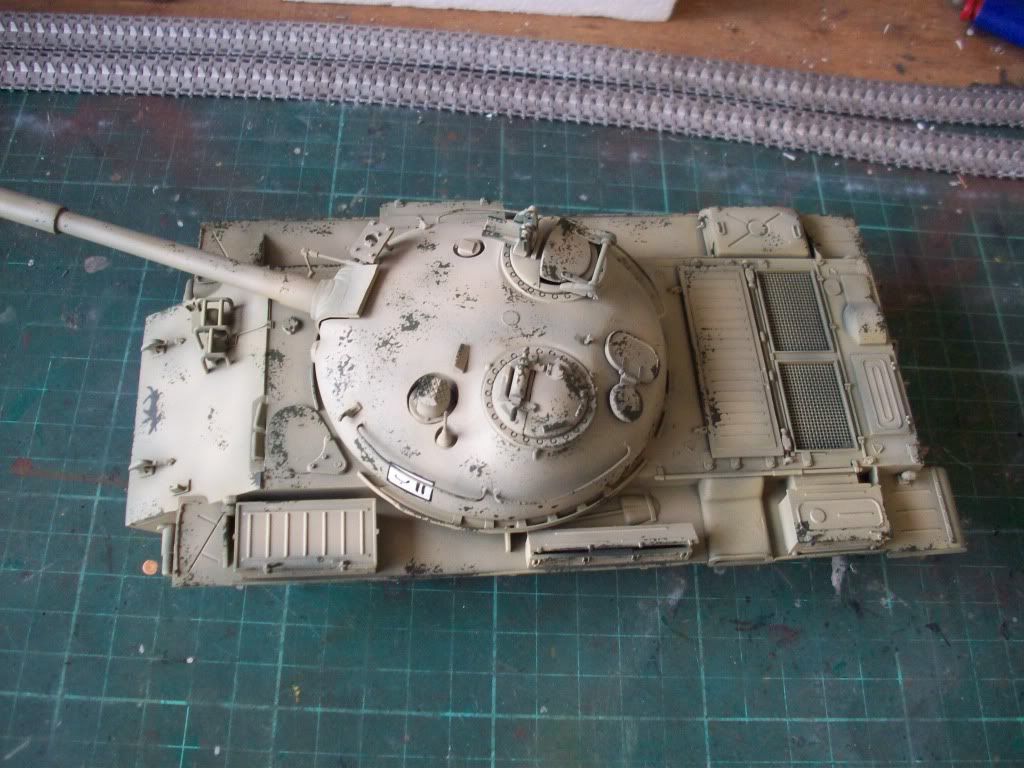
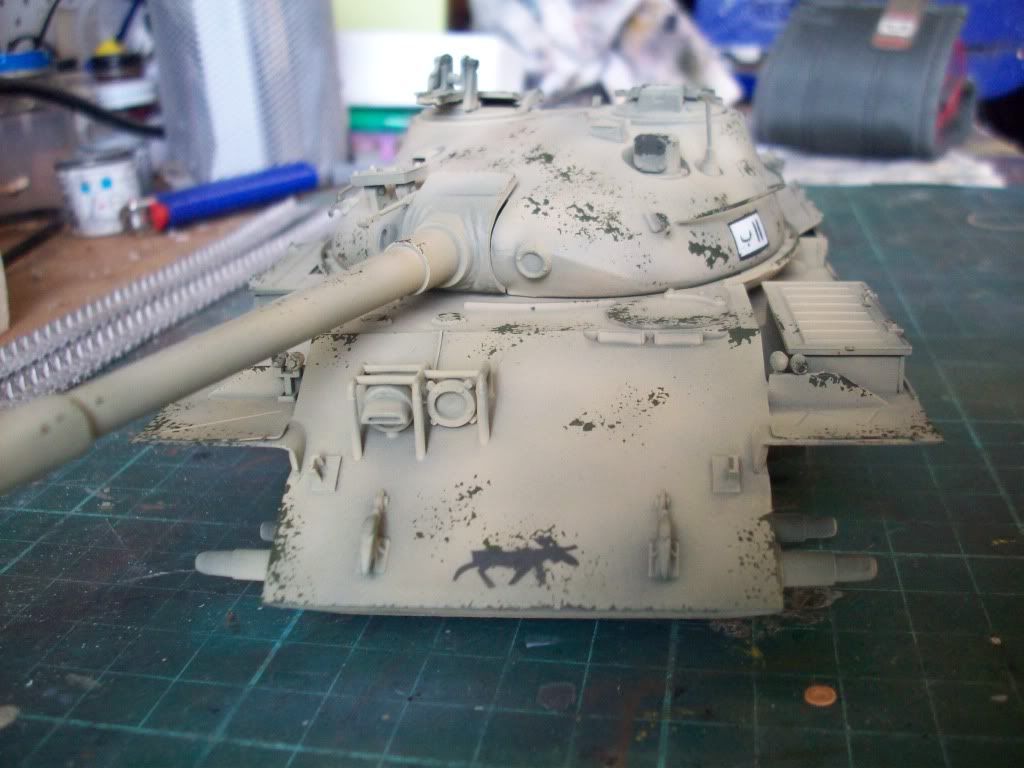
 :laugh:
:laugh: